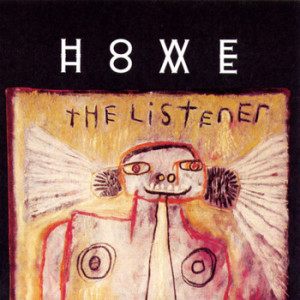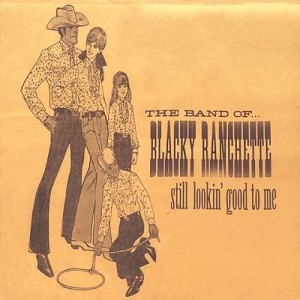 Howe Gelb is one of the most prolific of American independent recording artists. He’s based in Tucson, Arizona, although he now spends about half of his time in Denmark, where his wife is from. Recording under his own name, or as the leading force behind groups such as Giant Sand, OP8, and the Band of Blacky Ranchette, Gelb churns out a near-continuous stream of off-beat and fascinating music. It’s Western-influenced, jazz-inflected rock, deceptively low-key but fairly bursting with musical and lyrical ideas, and the tunes are the kind that worm their way into your consciousness and settle in for a long stay.
Howe Gelb is one of the most prolific of American independent recording artists. He’s based in Tucson, Arizona, although he now spends about half of his time in Denmark, where his wife is from. Recording under his own name, or as the leading force behind groups such as Giant Sand, OP8, and the Band of Blacky Ranchette, Gelb churns out a near-continuous stream of off-beat and fascinating music. It’s Western-influenced, jazz-inflected rock, deceptively low-key but fairly bursting with musical and lyrical ideas, and the tunes are the kind that worm their way into your consciousness and settle in for a long stay.
This year, Gelb has put out two winning discs under different names. He is backed by a rotating cast of supporting players, some of whom appear on both discs.
The Listener was recorded half in the U.S., half in Denmark, and reflects the edgy tranquillity Gelb has apparently found in married life on two continents. On most of the U.S. tracks, he’s backed by drummer John Convertino and bassist Joey Burns, who together are the core of Calexico, and who formed Giant Sand’s rhythm section for several years. These three sound as though they were born to make music together, Gelb’s dusty, half-spoken baritone and distinctive piano and guitar styles being perfectly complemented by Joe and John on rhythm. The album open with three tracks featuring these three as the main players, plus a trio of violins from the Tucson Symphony who also played on Calexico’s 2003 gem, Feast of Wire.
“Glisten” is a piognant, minor-key piano-and-strings instrumental that sets the tone for the rest of the CD. On “Felonious,” Gelb has fun stealing licks and vocal stylings from Lou Reed. And his wordplay continues on “Jason’s List,” whose protagonist is a hanger-on trying to score points with his date by getting a pass to a musician’s performance.
Most of the rest of the album features the Danish musicians who moved in to Giant Sand when Burns and Convertino’s work with Calexico turned into a full-time gig. They help Gelb as he cobbles together a series of memorable songs, often openly borrowing from other styles, eras and musicians. There are a couple of tangos, the instrumental “Piango” and “Torque (Tango de la Tongue),” a duet with the sultry Henriette Sennenvaldt. “Blood Orange” is another catchy and sexy duet with Marie Frank. “B 4 U (Do Do Do)” combines snippets of Bill Withers’ 1973 hit “Call on Me” with doo-wop trappings and hard-rock guitar. “Now I Lay Me Down” is an epic slow rocker based on the children’s prayer, with musical and lyrical quotes from plenty of other musicians, from Floyd Cramer to Neil Young.
The two tracks I keep coming back to over and over are “Lying There,” a poppy ditty with a Latinesque beat that honors Roger Miller in its offbeat meter and the use of novelty verses on serious themes. And “Cowboy Boots” is a look at his two homes, and how each influences his music. He walks around in cowboy boots on cobblestone streets, thinking about the Mexican food in Arizona, but acknowledges that he’s making good music in his adopted home, too. The snapping, rattling trap-set and thumping congas played by Peter Dombernowsky and Anders Stochholm lay down the perfect setting for Gelb’s rumbling near-whisper, his percussively plucked acoustic guitar and Anders Pedersen’s gentle mandolin notes.
 Still Lookin’ Good To Me is the fourth in a series of Blacky Ranchette albums going back to 1983. It’s a concept album of sorts, a modern cowboy tale told in Gelb’s typically cryptic lyrics and shambling song structures. It’s a lost Marty Robbins classic album, if Marty had been influenced by The Beatles, Captain Beefheart and the Meat Puppets, instead of the other way around.
Still Lookin’ Good To Me is the fourth in a series of Blacky Ranchette albums going back to 1983. It’s a concept album of sorts, a modern cowboy tale told in Gelb’s typically cryptic lyrics and shambling song structures. It’s a lost Marty Robbins classic album, if Marty had been influenced by The Beatles, Captain Beefheart and the Meat Puppets, instead of the other way around.
The backing crew is a bit more varied on this disc, although the core group includes Convertino and Burns, plus Jon Rauhouse on pedal steel on most tracks. To that basic band Gelb has grafted some of the cream of the crop of today’s indie musicians: Matt Ward on slide guitar, Neko Case, Chan Marshall (Cat Power) and Richard Buckner on vocals, as well as Kurt Wagner of Lambchop and Jason Lytle of Granddaddy.
Several of the tracks were recorded on the fly or in various fields: “Searing Wine” features the slide playing of Ward; “Under the Table” is a home recording with Howe on lead vocal and Sofie Albertsen Gelb on backing “doo-doo-doos.” “The Muss of Paradise” features Wagner working his way uncertainly through Gelb’s lyrics in a moving car, and “My Hoo Ha” is a salacious ditty played on two guitar notes, with able vocal assistance from Chan Marshall. Gelb and Jason Lytle give a modern spin to the folk classic “Working on the Railroad.”
Of particular note is “Getting It Made,” a duet featuring Richard Buckner and Neko Case. These two drag the great mid-20th Century duos (George and Tammy, Porter and Dolly, Johnny and June) into the 21st Century, with a karmic look at life on the wrong side of the tracks. The contrast between Case’s powerhouse and Buckner’s laconic vocal styles is echoed in the interplay between the bandoneon and slide mandolin from Gelb’s Danish crew. Other highlights are a Case duet with Gelb on “Mope-a-Long Rides Again” and the opening track, “Train Singer’s Song,” a parable of the hard work of making music, with particularly deft touches by Convertino on drums.
One song appears on both discs. The Handsome Family’s Brett and Rennie Sparks sing and play on “Moons of Impulse” on The Listener and Gelb does it solo acoustic on Still Lookin’ Good. It’s a thought-provoking metaphor on the consequences of living impulsively, in Gelb’s typically wry humor.
Oh, and I should mention that the Blacky disc ends with a live recording of a song titled “Square,” which Gelb co-wrote with the late Rainer Ptacek. The Tucson singer-songwriter died in the mid-90s after a series of long battles with illness, and Gelb has continued to champion his music, putting a Ptacek song on nearly every release.
“The Listener” is the more accessible of these two discs, but both are fine examples of thoughtful, independent Americana. If you’re tired of the usual verse-chorus-verse, and are willing to give something a little out of the mainstream a chance, either or both of these would be a good choice.
(Thrill Jockey, 2003)
Learn more at Gelb’s website.
